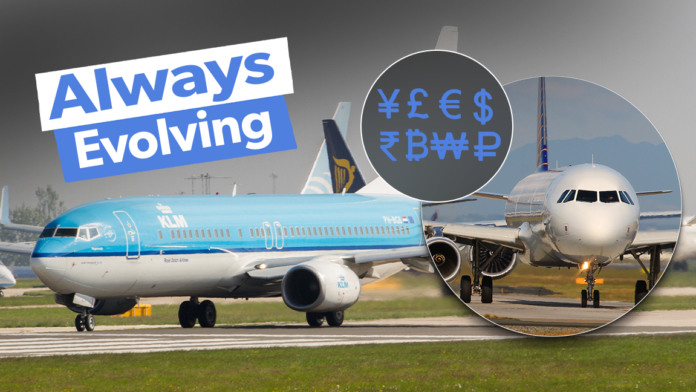Summary IATA suggests the end of high-priced tickets in 2024.
Various travel companies predict airfares to drop later in the year.
Different global regions show varying airfare cost recoveries.
Airlines worldwide have grappled since the pandemic with increased fuel prices, supply chain issues, and airline part dramas. However, for the consumer, the most critical factor for many is when airline ticket prices are much higher than the pre-pandemic airfares we were accustomed to.
According to a report by CBC, the International Air Transport Association (IATA) hinted we may see the end of the high-priced ticket saga soon. By the end of 2024, global flights are projected to surpass 40 million, compared with the 38.9 million seen before the waves of the COVID-19 pandemic.
To put the number of flights into perspective, this year, carriers around the globe will carry an astonishing 4.7 billion people (over three times the population of India, the world’s most populated country).
Photo: Joe Kunzler | Simple Flying
Not everyone is convinced that ticket prices will fall, however. Global travel company Flight Center’s corporate travel arm, FCM Travel, expects air prices to increase between 3% and 7% due to increased fuel prices, sustainability changes, and continuing spiraling new aircraft costs. Let’s read through who’s saying what, and what it means for your wallet.
Related How Airline Ticket Pricing Works Dictated by algorithms and passenger demand, ticket prices are subject to sudden spikes and falls.
Get all the latest airline route news right here.
Lower airfares are coming
Other travel companies, such as BCD and AMEX GBT, have forecast that the cost of some tickets will drop by the end of the year. Based in Utrecht, Netherlands, BCD expects the cost of travel to Asian markets to fall nearly 3% for business and 4% in economy, while the rest of the globe could see a drop of 1%.
As we all grapple with the cost-of-living crisis, many of us are looking for ways to cut costs and only opt for the essentials. Should travel be part of that agenda, travel company Hopper expects the cost of flying in the United States to reduce by the end of 2024.
Photo: EQRoy | Shutterstock
OAG, a travel data company, has weighed in on the debate, with its chief analyst, John Grant, explaining:
“There will be a continuation of the status quo, with only minor fluctuations in fare prices. Although we may see a slight shaving of fares as demand softens in the very low season, the fundamentals of a high operating costs base remain [plus] increased salaries, oil prices etc. suggest that we will not see much of a shift.”
Strong recovery
As expected, every market is seeing slightly different costs and results, so Simple Flying looked into data from IATA to determine which corner of the globe you will see the best improvement on the cost of your next airline ticket:
Africa
Due to limited infrastructure, connectivity issues, and development, this region continues to suffer and is unlikely to see positive results in the near future in terms of ticket prices.
Asia-Pacific
Domestic markets in China and India remain strong, and with the return of international Chinese tourists, the return of low fares here is projected to be achieved by the end of this year.
Europe
Continuing to see strong demand, airlines across Europe are expected to end the financial year strong despite regional conflicts hampering some operations. Ticket prices are likely to remain stable, although the fierce competition in some markets may see some routes dropping in price.
Latin America
Economic and social turmoil has hampered positive results in the region. However, the exception is Mexico, which has rebounded with a vengeance.
Middle East
With multiple strong carriers rebounding strongly in the region, namely Qatar Airways and Emirates, IATA expects solid financial performances in 2023 and 2024.
North America
Being the first region to return to profitability post-pandemic in 2022, this region remains the top contender. Air fares have been high over the past two years, but the future projections are that they will likely not rise any further, and could even begin to drop.
Want answers to more critical questions in aviation? Check out the rest of our guides here .
How much can I expect airfares to drop?
According to the AMEX GBT Travel Air Monitory Report, we will see airfares across the globe reduce ever so slightly, forecasting the below savings in 2024:
Region to region Cost of airfares South America to South America Decrease by 11.9% North America to Central America Decrease by 7.8% North America to Asia Decrease by 7.5% Asia to North America Decrease by 5.2% North America to Europe Decrease by 3.5% Europe to North America Decrease by 1.2%
Photo: Darren Baker | Shutterstock
With many travelers stuck at home with itchy feet, the US State Department has seen a surge in citizens looking to take flight, with 24 million passport books issued in the 2023 fiscal year. Records have also been broken in select markets when it comes to demand, with the likes of travel between the United States and Costa Rica reaching record highs, with more traveling between the two countries now than in 2019.
Airlines are responding to these patterns, with many US carriers operating 10% more flights than ever. The US Bureau of Labour published its statistics in February, stating that airfares are now floating around 6% cheaper than last year and 15% less than we saw a decade ago.
New services have also surfaced, encouraging airlines to forge new partnerships and grow their international or domestic footprints; examples of this were United Airlines’ inaugural service between San Francisco and Christchurch, which just finished its first season connecting California to New Zealand’s South Island, and, more recently, the announcement of plans to serve Marrakech, Cebu, and Medellín.




